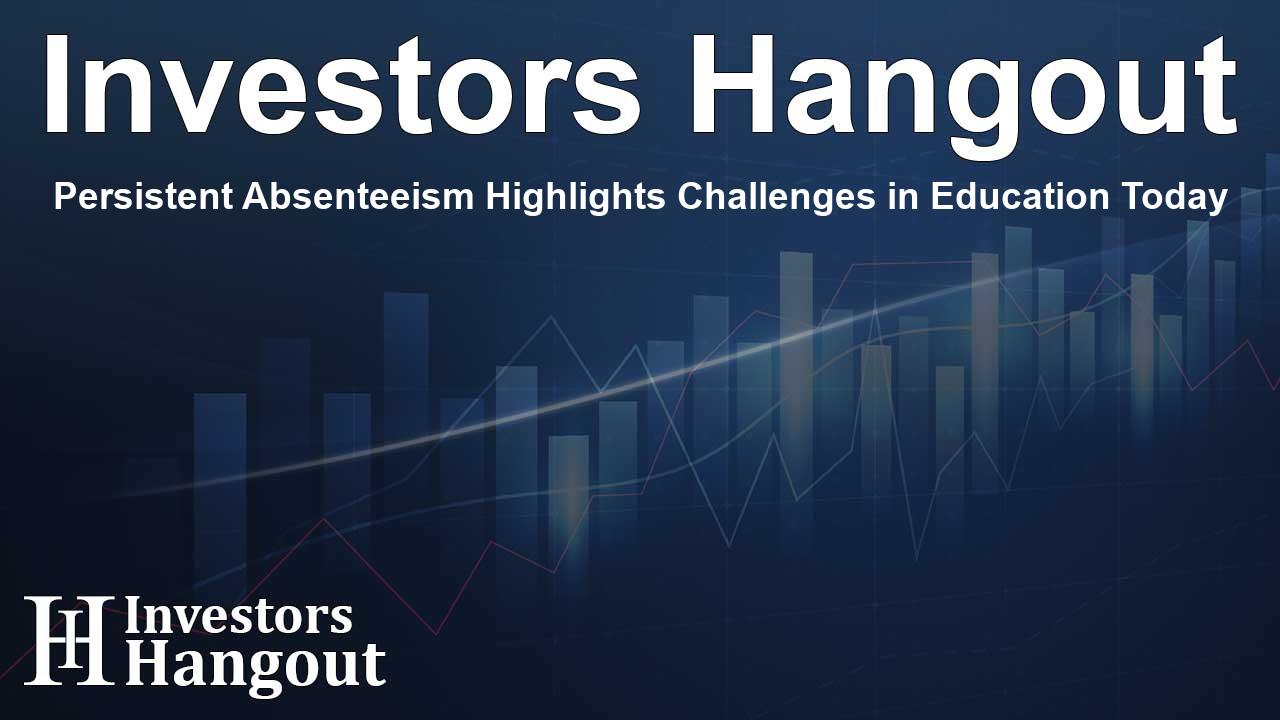Persistent Absenteeism Highlights Challenges in Education Today

Persistent Absenteeism: An Ongoing Concern in Education
Chronic absenteeism is a mounting problem in educational systems across the country. Recent findings indicate that 73% of teachers believe this issue has either persisted or worsened in the current school year. This highlights a significant challenge faced particularly in Title I schools that cater to a large number of low-income students.
The Stark Reality of Title I Schools
Teachers in Title I schools report alarming rates of chronic absenteeism, which is defined as students missing 10% or more of the academic year. Recent surveys reveal that nearly 30% more educators in Title I schools consider absenteeism to be a moderate to severe problem compared to their peers in other schools.
Understanding the Causes of Chronic Absenteeism
Seventy percent of Title I educators attribute the lack of school prioritization among families as a primary reason for absenteeism. Many teachers observe that basic needs like housing, food security, and childcare critically impact student attendance.
Comparison with Non-Title I Schools
In contrast, teachers at non-Title I institutions often cite issues related to student mental health, stress, and voluntary absences as leading causes. This difference underscores the various challenges each group faces in combating chronic absenteeism.
Strategies to Mitigate Absenteeism
To combat absenteeism effectively, teachers advocate for several strategies focused on student and parent engagement:
- 64% believe in enhancing communication with parents and guardians.
- 49% support implementing academic interventions to address learning loss.
- 36% highlight the need for improved mental health resources.
- 34% recommend providing support for students facing food or shelter instability.
Academic Performance Correlation
The connection between chronic absenteeism and academic performance is evident, particularly among historically disadvantaged groups. Those students with higher absentee rates are often the ones lagging academically, as demonstrated by recent national assessments. Over two-thirds of students falling into the lower-performing category originate from disadvantaged backgrounds.
The Classroom Impact of Absenteeism
Educators voice their concerns extensively about how absenteeism disrupts the learning environment. Key findings reveal:
- 55% of teachers indicate the need to revisit prior lessons due to absenteeism.
- 54% report that reintegrating students who have been absent can create classroom distractions.
Increased Workload for Teachers
Teachers, particularly in Title I schools, also bear the brunt of increased workloads due to absenteeism:
- 74% of Title I teachers spend more than two hours each week reintegrating absent students.
- 72% adjust their lesson plans to accommodate missed classes, while only 53% of non-Title I teachers do the same.
A Deeper Look into the Methodology
This overview stems from a recent nationwide survey targeting K-12 teachers, conducted online over a three-day period, which gathered insights from a wide range of educators about their experiences with absenteeism.
About Study.com
Study.com is dedicated to enhancing educational opportunities for over 34 million learners and educators each month. With its comprehensive online learning platform, it provides resources for K12 curriculum, college courses, and test preparation. As a recognized leader in educational equity, the company has contributed $29 million towards initiatives aimed at increasing access and success in education.
Frequently Asked Questions
What percentage of teachers report worsening absenteeism?
Seventy-three percent of teachers indicate that chronic absenteeism has persisted or worsened this school year.
What are the main causes of absenteeism in Title I schools?
The lack of prioritization concerning school among students and parents is a significant reason educators cite for chronic absenteeism.
How do Title I schools compare to non-Title I schools in absenteeism?
Teachers in Title I schools report higher rates and severity of absenteeism compared to non-Title I educators.
What strategies do teachers support to improve attendance?
Teachers support enhancing communication with parents and implementing academic interventions as effective strategies to combat absenteeism.
How does absenteeism affect classroom dynamics?
Absenteeism can create significant disruptions, requiring teachers to revisit old lessons and manage distractions once absent students return.
About The Author
Contact Hannah Lewis privately here. Or send an email with ATTN: Hannah Lewis as the subject to contact@investorshangout.com.
About Investors Hangout
Investors Hangout is a leading online stock forum for financial discussion and learning, offering a wide range of free tools and resources. It draws in traders of all levels, who exchange market knowledge, investigate trading tactics, and keep an eye on industry developments in real time. Featuring financial articles, stock message boards, quotes, charts, company profiles, and live news updates. Through cooperative learning and a wealth of informational resources, it helps users from novices creating their first portfolios to experts honing their techniques. Join Investors Hangout today: https://investorshangout.com/
The content of this article is based on factual, publicly available information and does not represent legal, financial, or investment advice. Investors Hangout does not offer financial advice, and the author is not a licensed financial advisor. Consult a qualified advisor before making any financial or investment decisions based on this article. This article should not be considered advice to purchase, sell, or hold any securities or other investments. If any of the material provided here is inaccurate, please contact us for corrections.
